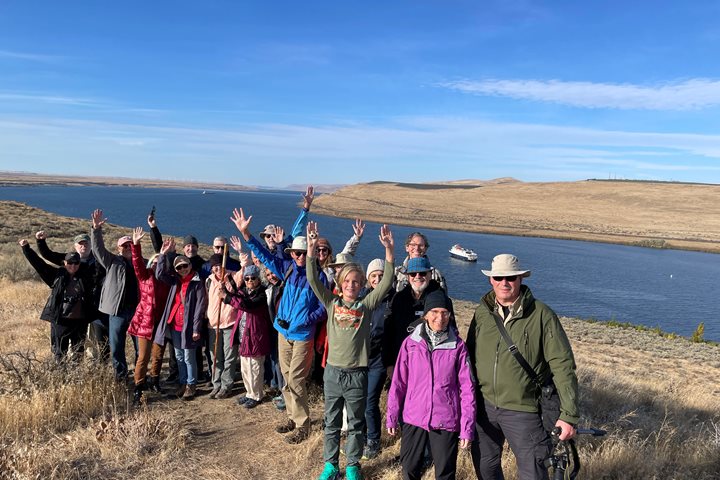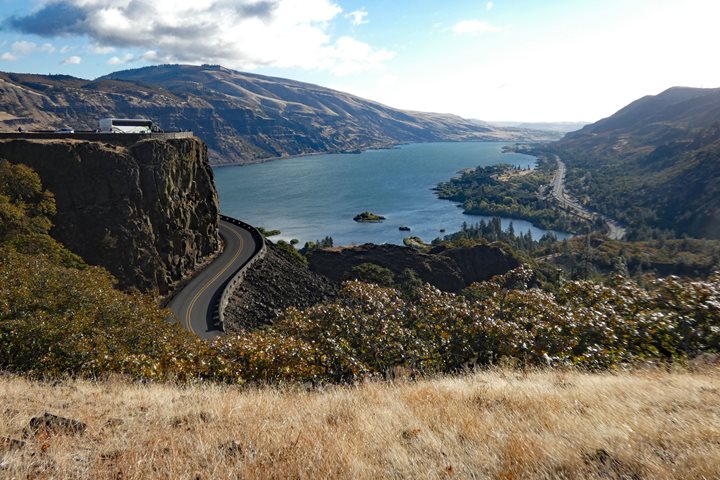Rain was falling in earnest at 0600 hours as the National Geographic Sea Bird made her way toward the Port of Astoria. We docked at Pier 2, a working dock where fishing boats come and go. Gulls wheeled around us and harbor seals swam near our ship.
Right after breakfast we boarded our motor coaches and drove through rain—Lewis and Clark weather—to Fort Clatsop National Historic Park. Here is a replica of the fort where Lewis and Clark and the Corps of Discovery spent the cold, wet winter of 1805-06. A ranger gave us a guided tour and then Rich and Grace, our naturalists, led us on a nature walk in the coastal rain forest that surrounds the fort. Giant Sitka spruce trees rose high on either side of the trail. Some of the wildlife we saw included a northwestern salamander, banana slugs, mallards, a marsh wren, chickadees, and Douglas squirrels. These small dark squirrels with rusty bellies were busy shelling and eating the seeds out of Sitka spruce cones. They left telltale piles of cone scales and stripped cones beneath the trees. On our way back to town we saw a large herd of Roosevelt elk resting in a meadow; the descendants of the herd that fed Lewis and Clark and the Corps of Discovery when they wintered here.
Our next stop was at the Columbia River Maritime Museum, one of the finest maritime museums in the country. Here, we learned very many things, including details about the Columbia Bar, known as the ‘Graveyard of the Pacific’ for the great numbers of ships and sailors lost in this dangerous place. The tumultuous waters have even been described as “...one of the most fearful sights that can possibly meet the eye of a sailor.”
Our afternoon excursion brought us across the great Astoria-Megler Bridge, all 4.1 miles of it, to Washington and the north shore of the Columbia River to visit Cape Disappointment and the Lewis and Clark Interpretive Center. The center is located on a high and precipitous bluff overlooking the Pacific Ocean. A strong wind buffeted the trees—and us—and raised large swells that thundered onto the base of the cliff below. We had a view of Cape Disappointment Lighthouse and white water leapt high up the cliff of dark basalt beneath it. Following a tour of the excellent exhibits here, most of us took a hike on a narrow path through the woods to Waikiki Beach. It was exhilarating to be here on this beautiful beach with the high surf and the strong wind sweeping in from the ocean.
Back on board our ship, we gathered in the lounge for our first evening social hour and Recap. Our photo instructor/naturalist, Rich Reid showed some of his beautiful photographs and gave us a short lesson on how to use our cameras. Dinner was followed by a presentation from our historian Dr. Robert Gatten on Thomas Jefferson’s dream of western exploration which was eventually carried out by Lewis and Clark.







